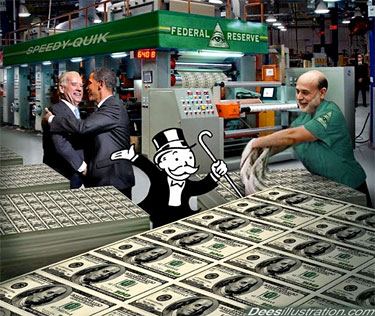The Fed had recently signaled that it intends to bring its quantitative easing (QE) scheme (where the Fed creates money to buy US Treasury bonds) gradually to an end. Over the past month this has affected emerging-market currencies and caused the yield on 10-year US government bonds to increase from 1.6% to 2.2%. It has also caused stock markets and commodity prices to fall - the FTSE 100 has fallen by nearly 10% over the past month. Following Bernanke's statement on Wednesday, which reiterated the Fed's intention to taper off QE, stock markets around the globe fell sharply.
QE has distorted asset markets around the world. The unwinding of QE in the US will not be painless for investors or foreign central banks. Investors in emerging markets can expect a particularly bumpy ride over the next few years - click here.
